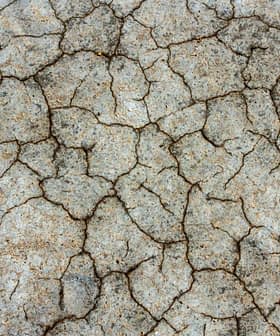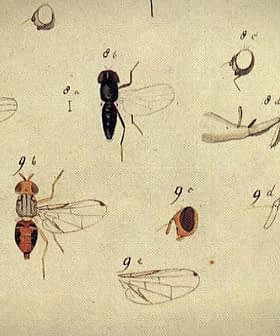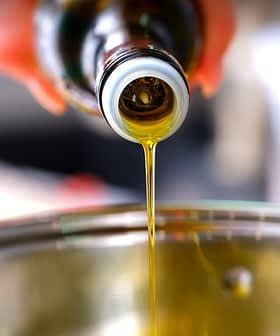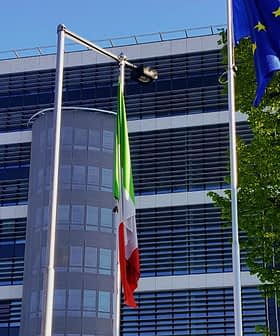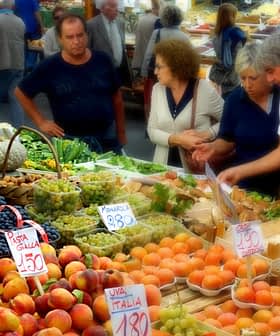Researchers Develop Easier, Cheaper Method for Measuring Free Acidity
Brazilian researchers have developed a new, cost-effective method for measuring the free acidity of olive oil and other edible oils, which may be more accurate and simple to execute than traditional methods. The new technique uses digital image colorimetry to calculate free acidity, providing a potential alternative to the conventional volumetric alkaline titration method used by the International Olive Council.
Brazilian researchers have developed a new method for calculating the free acidity of olive oil and other edible oils.
The findings, published in Food Chemistry, indicate that implementing this new technique uses 90 percent fewer chemicals, is more cost-effective and may be more accurate and simple to execute.
This approach signifies a move toward developing cleaner, quicker methods, offering benefits for both producers and consumers.
Free acidity measurement is essential in the olive oil sector. The International Olive Council’s (IOC) trade standards set the upper limit of acidity for extra virgin olive oil at 0.8 percent. Virgin olive oils must have an acidity of no more than two percent.
“Olive oils from high-quality, well-preserved olives tend to have lower acidity, but they will not necessarily have good sensory attributes,” Cleiton Antônio Nunes, co-author of the study and a food science researcher at the Federal University of Lavras in Brazil, told Olive Oil Times.
See Also:The Categories of Olive Oil“Low acidity alone does not confirm the quality of a good vegetable oil,” he added. “Acidity does not constitute a sensory characteristic of the product but is instead a chemical indicator.”
The researchers set out to validate and refine the new method by comparing its results with those obtained from the same edible oil samples via volumetric alkaline titration, the traditional method used by the IOC. The procedure is straightforward and involves a chemical reaction with the fatty acids that cause acidity.
“The reaction’s completion is indicated by the mixture’s transition from colorless to pink upon adding a reagent,” Nunes said. “The volume of this reagent consumed until the color changes is then used to determine free acidity.”
The conventional method, conducted in laboratories, typically requires about 20 minutes per sample.
“The advantage of the traditional method is that it presents low analytical complexity, meaning it does not require expensive and sophisticated equipment nor a large laboratory structure,” Nunes said.
“On the other hand, the analyst’s experience in determining the point at which the mixture changes color, the end point of titration and the volume of reagent consumed to reach this point is crucial for the analysis to be reliable,” he added. “Therefore, it is important to have well-trained analysts.”
According to Nunes, the traditional method’s significant demand for chemicals elevates costs and generates substantial chemical waste, posing potential environmental hazards.
The alternative method proposed in the study employs a reagent that changes color upon reacting with the oil’s free acids. “The higher the free acid content, the more intense the resulting color,” Nunes said.
Subsequently, the colored solutions are photographed using a smartphone, and an application analyzes the color intensity, translating it into numerical data.
“This data is then applied in mathematical models to calculate the oil’s free acidity, thus employing digital image colorimetry as the foundational methodology,” Nunes said.
Digital image colorimetry is an analytical technique that derives numerical color information from digital images. This information can then be correlated with specific values of interest via mathematical models.
See Also:Researchers Develop Simplified Way to Determine Polyphenol Contents of Olive Oil“Contrary to titration, which relies on human visual judgment, our proposed method digitally measures color using an app, enhancing the precision of measurements,” Nunes said.
When juxtaposed with the outcomes from the traditional method, the new approach’s results showed excellent concordance. “We noted a remarkable correlation between the data acquired through the digital image colorimetry method and that from the titrimetric analysis,” Nunes said.
“The amount of samples and reagents needed in the method we developed is about 90 percent less than the traditional method, but we believe it is possible to reduce it even further,” he added.
The new study lays the groundwork for developing a practical application. “Our goal is to streamline analyses by utilizing a smartphone camera and applications to capture and process color data,” Nunes said, emphasizing that minimal laboratory infrastructure and a skilled analyst are still prerequisites for sample preparation and result interpretation.
Nunes envisions the possibility of providing a user-friendly kit containing the necessary reagents for analysts to conduct tests and obtain results through a dedicated app shortly.
The research team has also applied digital image colorimetry techniques to other critical analyses of olive oil and other edible oils, such as determining peroxide values.
Nunes noted the importance of such values in evaluating oil quality and the maturity of olives, bananas, and other fruits.
“This approach [digital image colorimetry-related] signifies a move toward developing cleaner, quicker methods, offering benefits for both producers and consumers,” Nunes said
Future research aims to assess the new free acidity measurement method’s robustness across various conditions, including different smartphone brands, settings and camera qualities.
“For some digital image colorimetry-based methods, creating a specific app could simplify and further automate analyses,” Nunes said. “Collaboration with interdisciplinary teams would be crucial for delivering a high-quality final product.”



